The Dial - Changes over the Years
SEIKO World Time watches from 1964 through 1976
A detailed look at all of the changes made to the dials throughout the years
The First Series: 1964
When the 6217-7000 was released in 1964, it was offered with two dial options:
- Silver with a linen pattern, 24 hour ring in black and blue
- Black with a sunburst radial pattern, 24 hour ring in white and yellow or red
WORLD TIME was printed at 12 o-clock, just under the SEIKO logo.
At 6-o'clock was printed AUTOMATIC, then DIASHOCK and then 17 JEWELS.
There was no lume on the dial or the hands.
The GMT hand was of the tapered or thin variety, with black GMT hands on silver dials, and gold/copper colored GMT hands on black dials.
The numbers around the 24-hour ring are cut-outs in the ring colors, rather than a printed digits, and the number 18 is split between the day and night colors on the 24-hour ring.
Examples throughout this model run (1964, 1966 and 1967) can be found with dial code MADE IN | JAPAN.
Examples from the later half of 1964 through 1967 may alternately have dial code JAPAN | 6217-7000TAD.
Aside from the dial code, which was printed at the bottom margin / 6-o'clock position, there were no other changes.
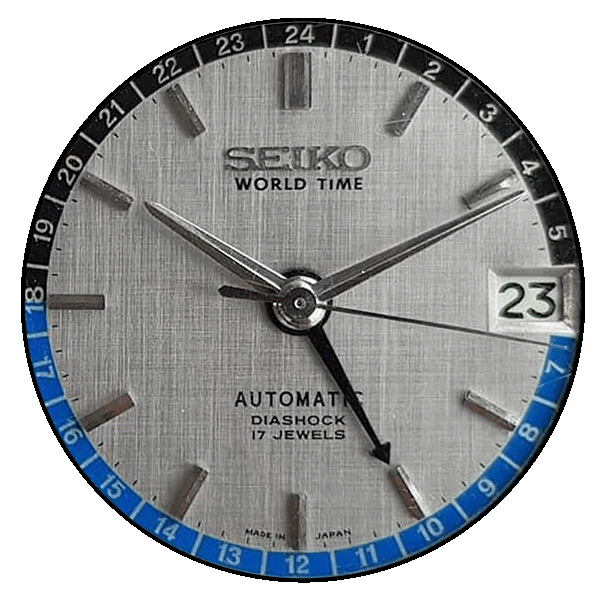
Dial code: MADE IN JAPAN
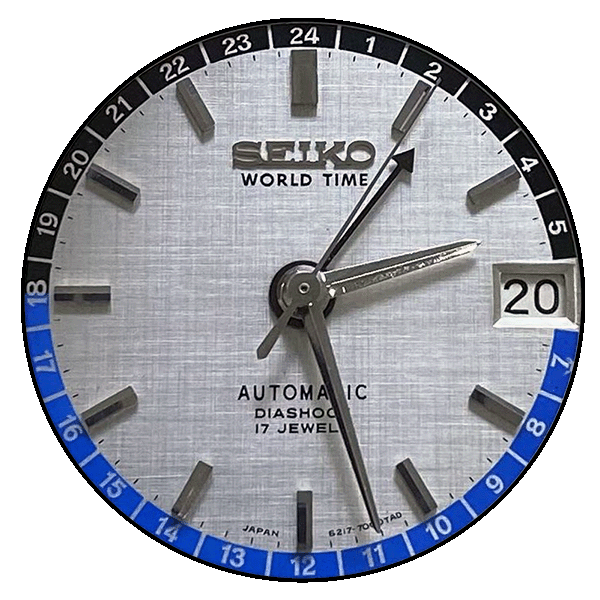
Dial code: JAPAN 6217-7000TAD
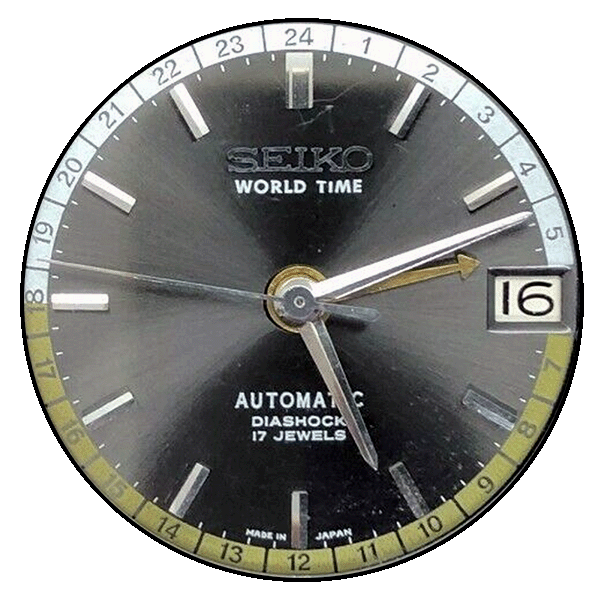
Dial code: MADE IN JAPAN
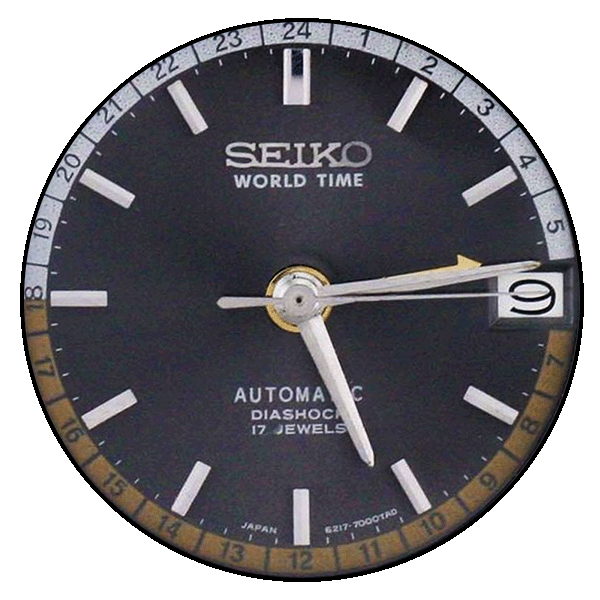
Dial code: JAPAN 6217-7000TAD
"|" indicates the 6-o'clock indice dividing the dial code.
The Asian Games: 1966
In August 1966 SEIKO produced a special edition 6217-7010 in celebration of the Asian Games.
This watch received an updated case and crown, while retaining the dial and hands format from the 6217-7000.
This watch appears to have only been produced in a deep silver linen finish, very similar to the prior model's silver dial, but a darker hue that is not easy to capture in a photo.
The most common, and likely correct dial code is JAPAN 6217-7000TAD.
The most common, and likely correct GMT hand is the thin black version.
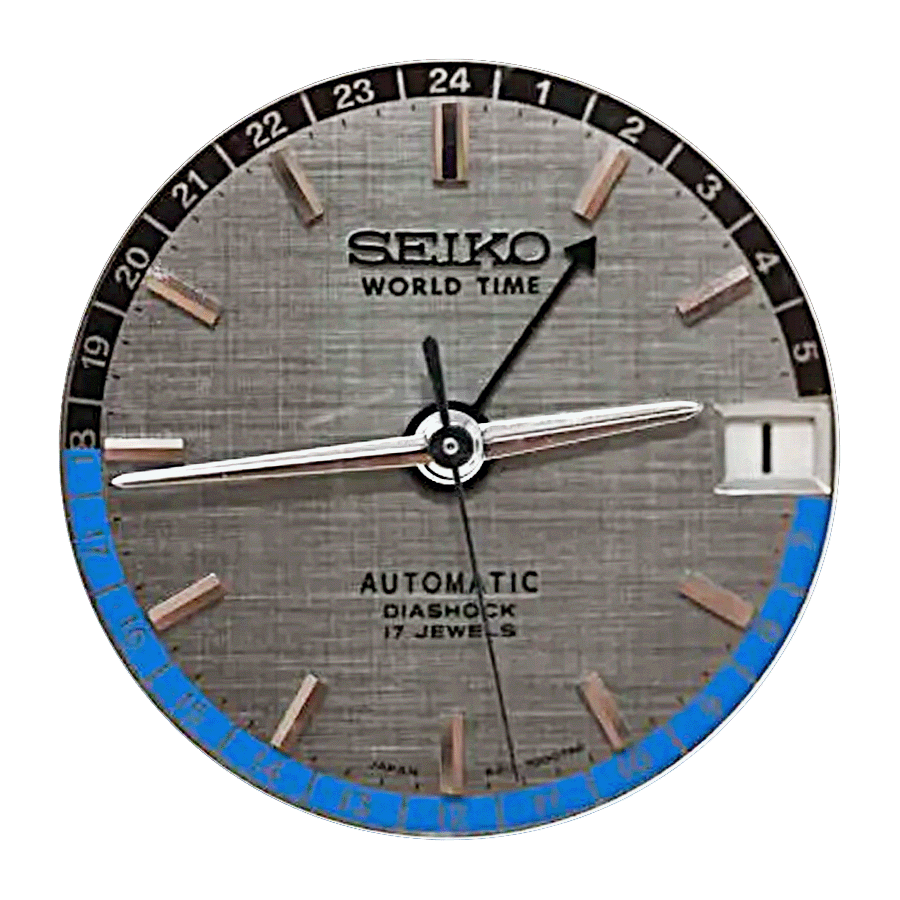
JAPAN 6217-7000TAD
The Second Series: 1967
While the Asian Games special edition watch takes credit for being the first 6217-7010 model designation (in August 1966), it was its later siblings in 1967 that received the updated dial.
In this case, both dials (silver and black) remained nearly identical to their prior versions, with added circular dots of lume at the inside edge of each hour marker.
The dial code designation was also updated to read: JAPAN 6217 | 7010TAD.
Similarly, the hour and minutes hands retain their previous shape, this time with strips of applied lume.
The tapered GMT hands retired completely, with all examples now using the thin variety for this series.
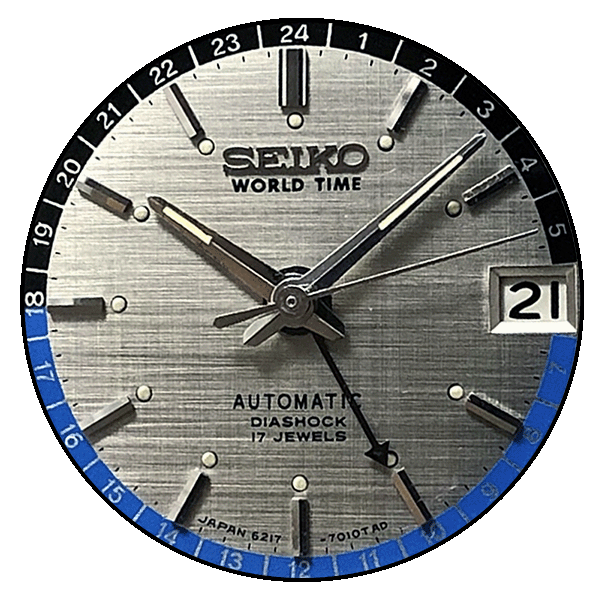
JAPAN 6217-7010TAD
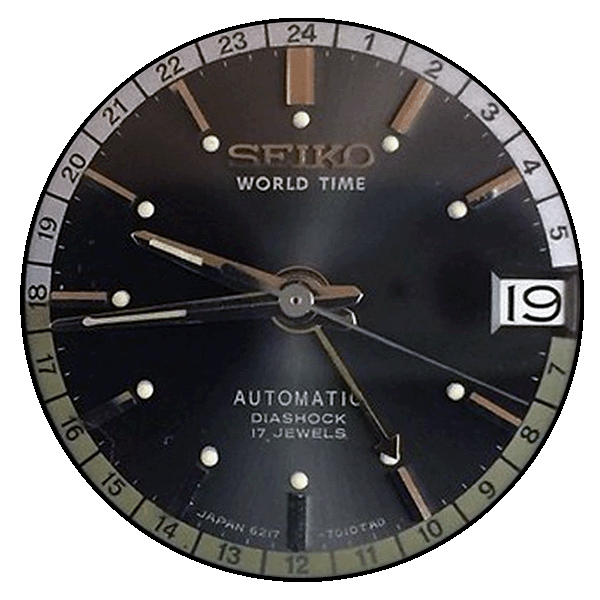
JAPAN 6217-7010TAD
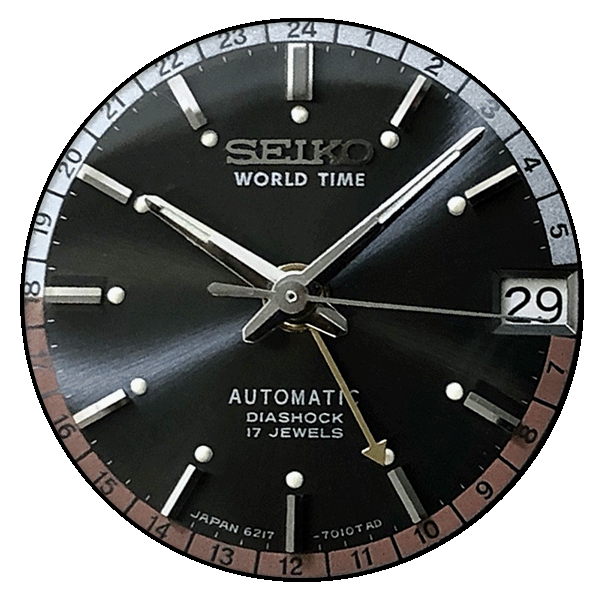
JAPAN 6217-7010TAD
NOTE: There appear two be two variations of the black dial's 24-hour ring. One has a more copper/gold or yellow tone on the bottom half, the other a more reddish bronze tone. It is unclear if these are examples of the same dial, with some having faded over time, or in fact different color options.
The Third Series: 1968
The dials were again updated for the 1968 production of the 6117-6010 and 6117-6019.
This time the lumed dots at each hour marker are replaced with lumed indices at 12, 6 and 9 o'clock.
A rectangular lume application is also placed at 3-o'clock, next to the date window.
AUTOMATIC is moved to the 12-o'clock position, under the SEIKO logo.
WORLD TIME is moved to the 6-o'clock position, along with the Suwa logo.
No more mention of the jewel count or diashock feature.
On the 24-hour ring, the numbering changes from 1 - 24 to 0 - 23.
The numbers on the top half of the 24-hour ring are left justified, while the numbers on the bottom half are right justified.
In all previous versions these numbers were centered.
The GMT hand is replaced with a red version on both dial colors, with a new lumed arrow tip.
The hour and minute hands are carried forward from the previous model.
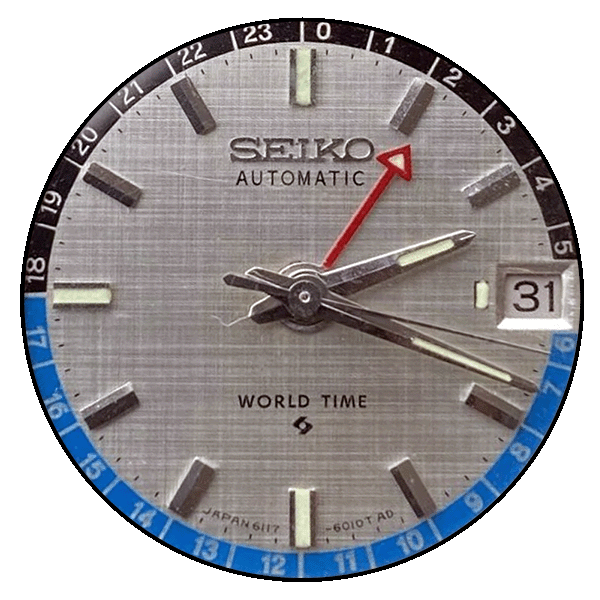
JAPAN 6117-6010TAD
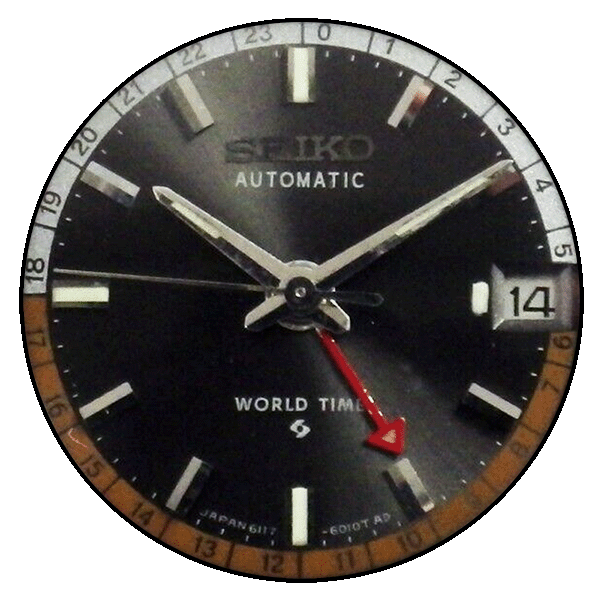
JAPAN 6117-6010TAD
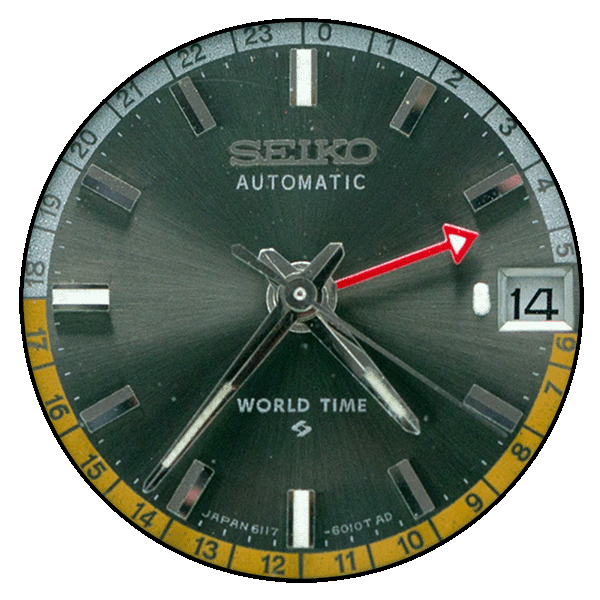
JAPAN 6117-6010TAD
The Fourth Series, Version 1: 1969
At the end of 1969 SEIKO started production of the new 6117-6400 and 6117-6409 models.
With this version they replaced the black sunburst dial with a black linen texture dial.
The silver linen dial was likewise replaced with an off-white dial.
Lume was again updated, now at each hour marker as an integrated part of the indices.
The hands and lume were also updated.
In prior releases the lighter colored dials accounted for about 75% of the total production, with the black dials making up the other 25%.
In this new series, black and white dials were manufactured in similar numbers for a closer to 50/50 split.
Version 1 of this dial maintains the 6-o'clock position of the WORLD TIME wording, carried forward from the prior series.
Black dials were marked JAPAN 6117 | 6400T and white dials were marked JAPAN 6117 | 6420T.
Also for the first time, the 24-hour ring is displayed in a single color all the way around, with a printed font color applied, instead of the old cut-out numbers look.
The font is changed - and much wider, with the zero marker being perhaps the most obvious example.
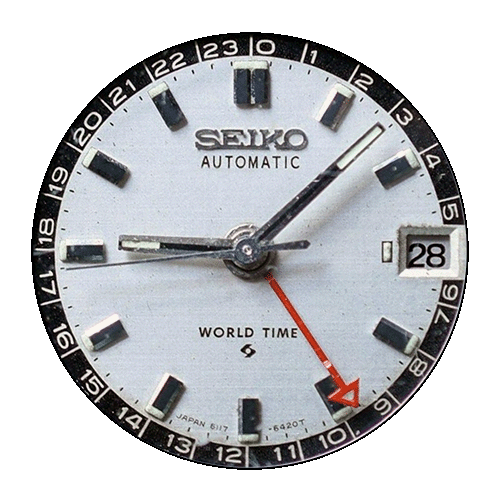
JAPAN 6117-6420T
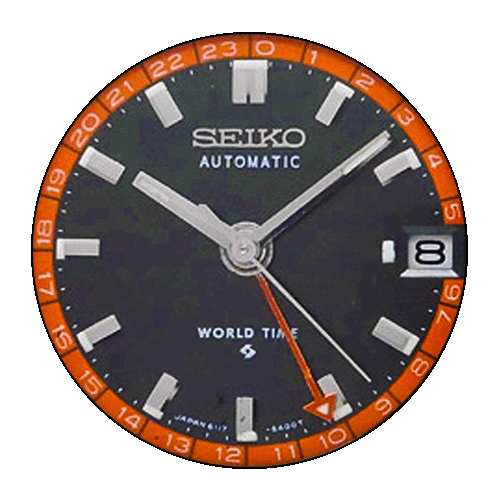
JAPAN 6117-6400T
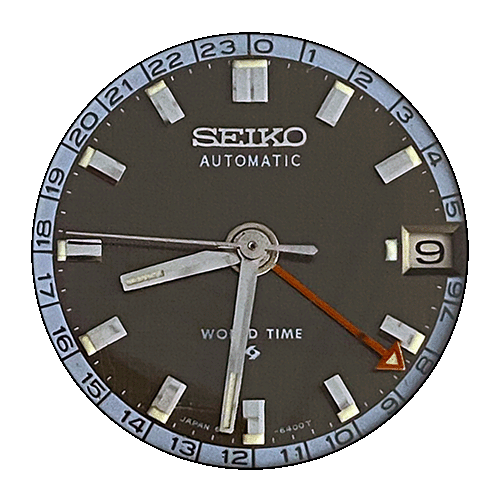
JAPAN 6117-6400T
The Fourth Series, Version 2: 1971
At the end of 1970 SEIKO made another change to the dials in this series.
This time it was quite small.
The position of WORLD TIME was moved back to the 12-o'clock spot on the dial, trading places with AUTOMATIC.
A gold version of this dial was also produced.
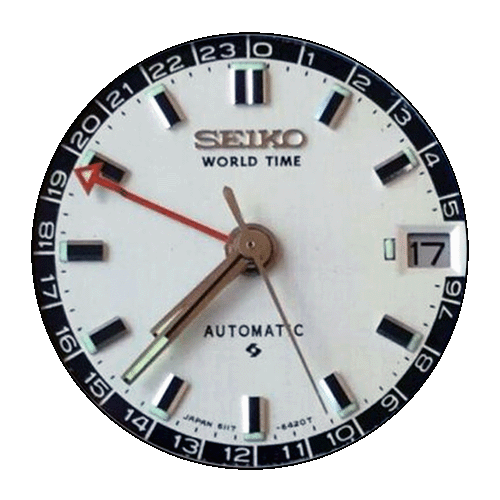
JAPAN 6117-6420T
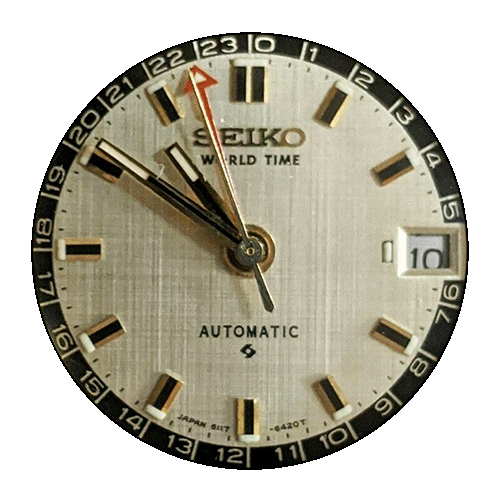
JAPAN 6117-6420T
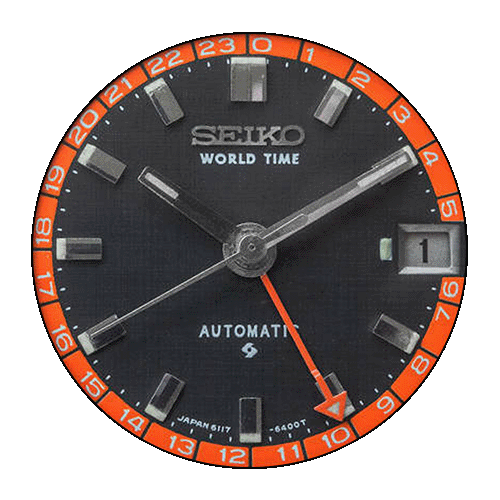
JAPAN 6117-6400T
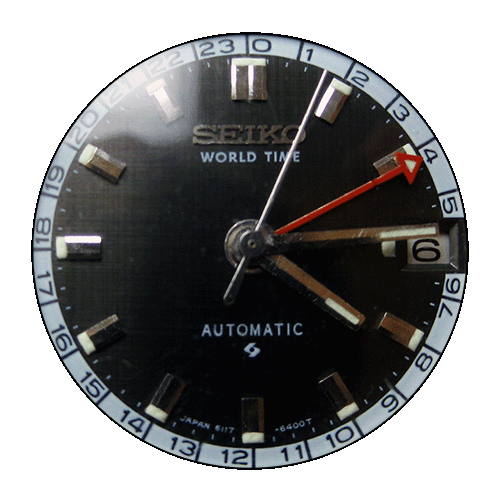
JAPAN 6117-6400T
The Fourth Series, Version 3: 1974, 1975
At the end of 1974 SEIKO introduced a new variant without lume.
These are quite rare in the data set, currently only appearing on a subset of the watches produced between December 1974 and Februrary 1975.
White dial versions have dial code JAPAN 6117-6424T and black dial versions have dial code 6117-6404T
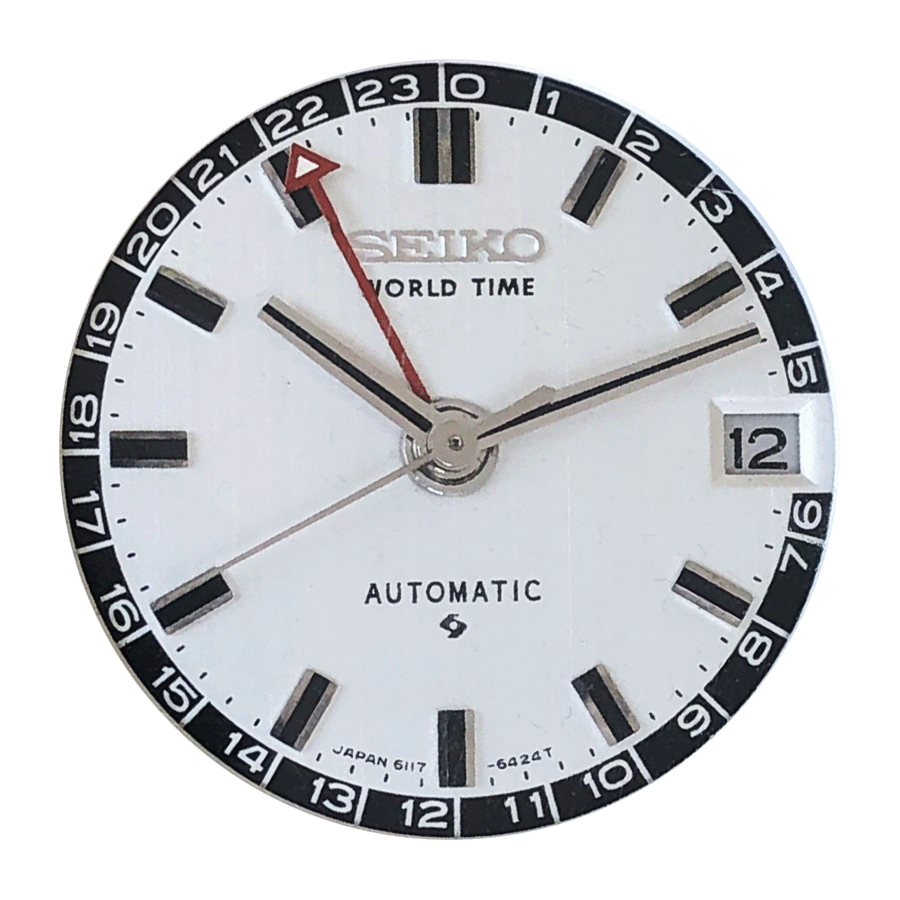
JAPAN 6117-6424T
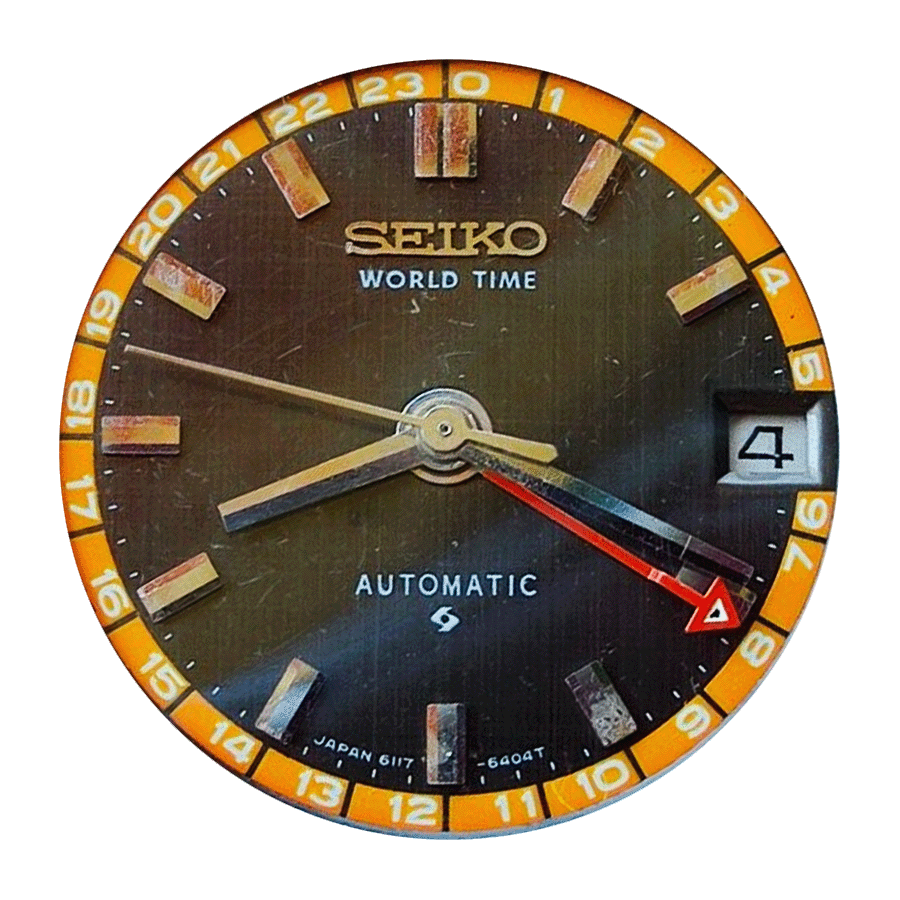
JAPAN 6117-6404T
Related Articles
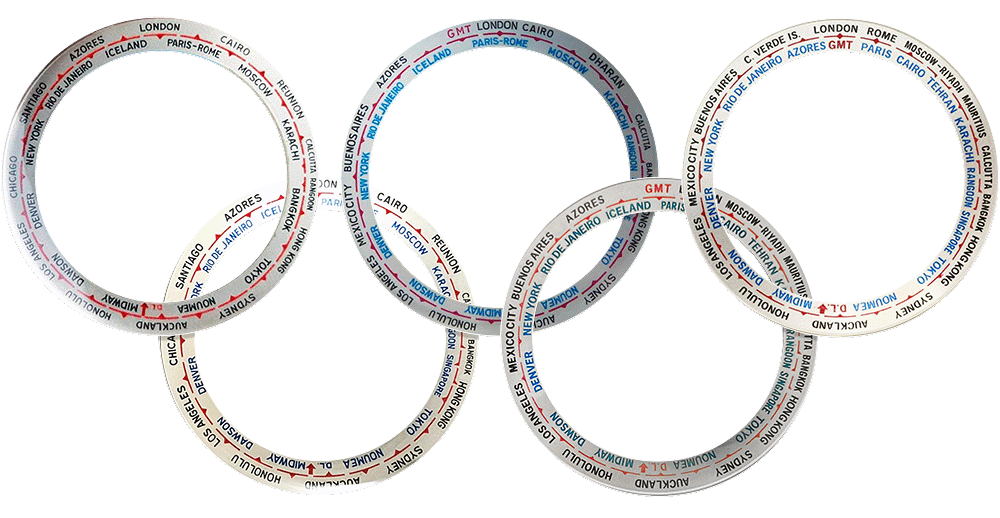
Reference Cities - Changes over the Years
A history of changes to the Cities Bezel on SEIKO World Time mechanical watches from 1964 through 1976
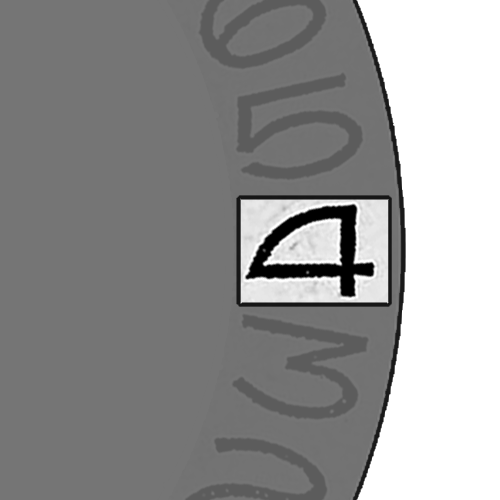
The Date Wheel - Changes over the Years
A history of changes to the Date Wheels on SEIKO World Time mechanical watches from 1964 through 1976
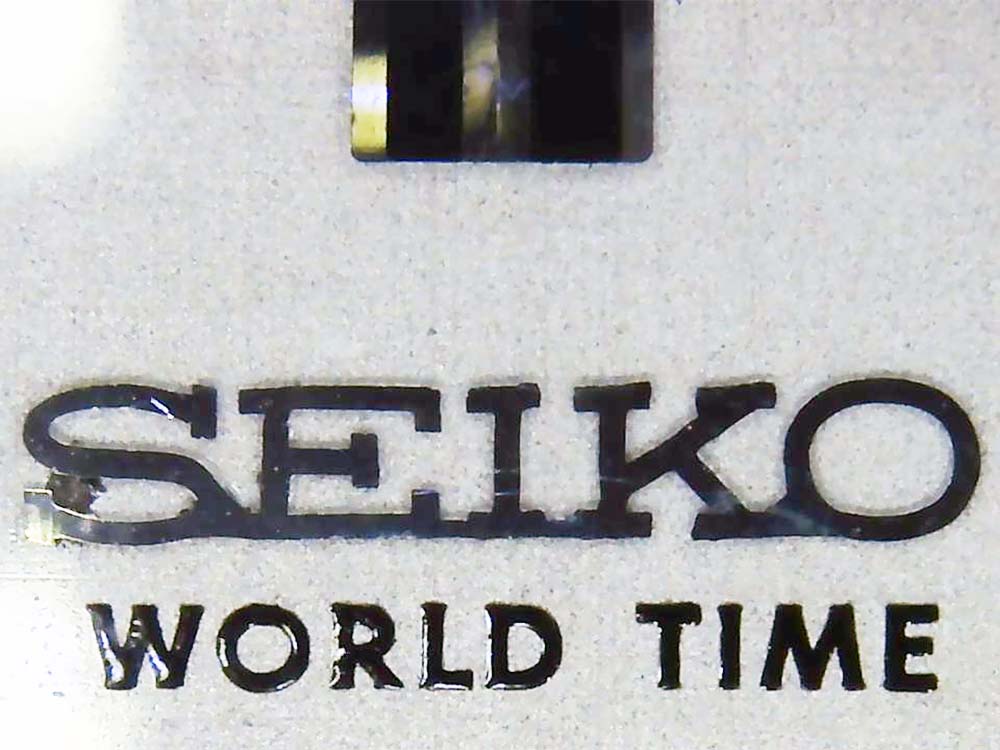
Authenticating The Seiko World Time 6117-640X
Tips on confirming the originality of your Seiko World Time 6117-640X
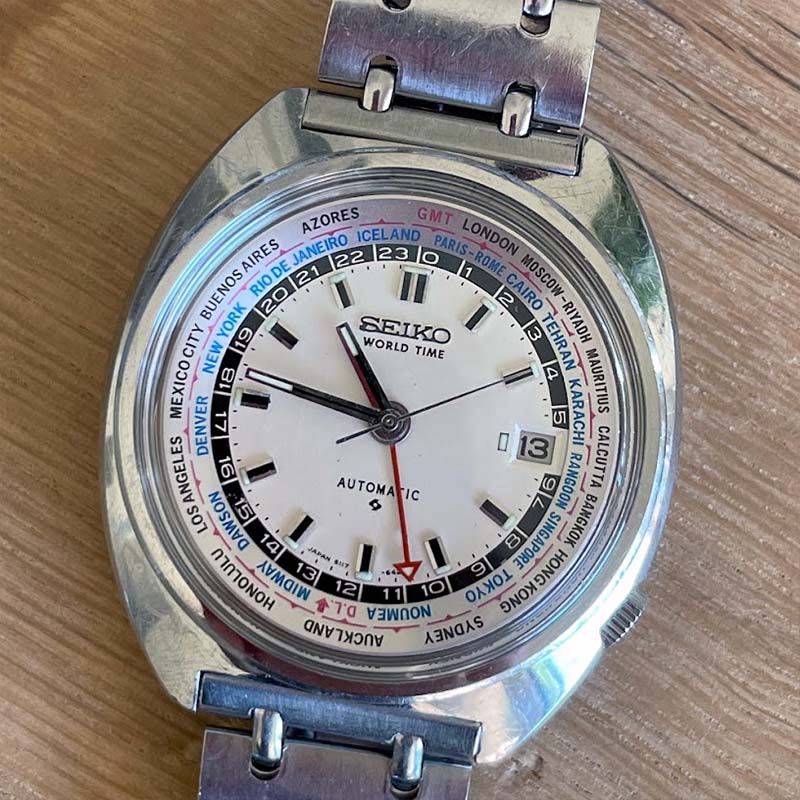
The Seiko World Time 6117-640X
All about the 4th series world time watch from SEIKO, produced from 1969 through 1976
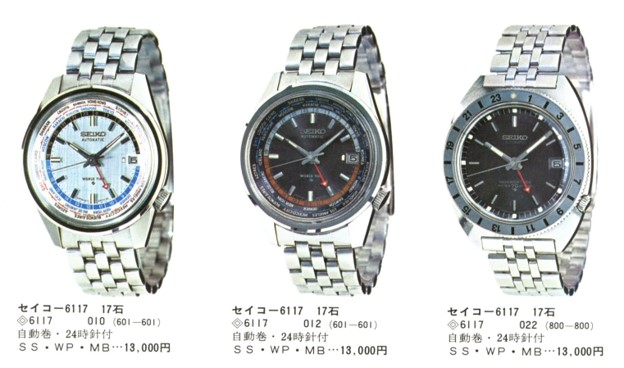
Old Ad Scans: Seiko World Time 6117-601X
A small collection of ad and catalog scans of the SEIKO World Time 6117-601X
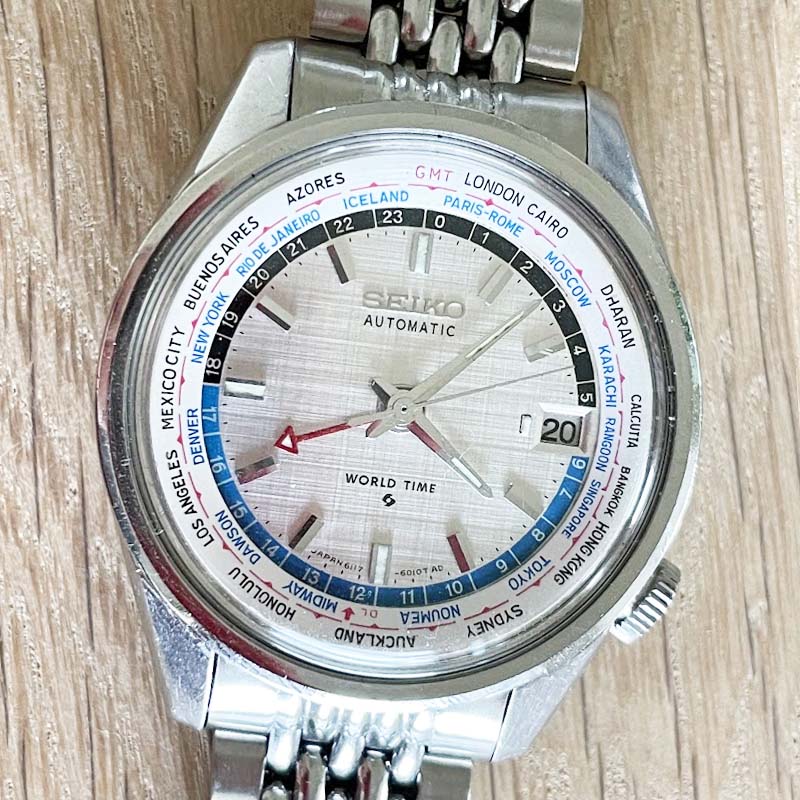
The Seiko World Time 6117-601X
All about the 3rd series world time watch from SEIKO, produced from 1968 through 1969
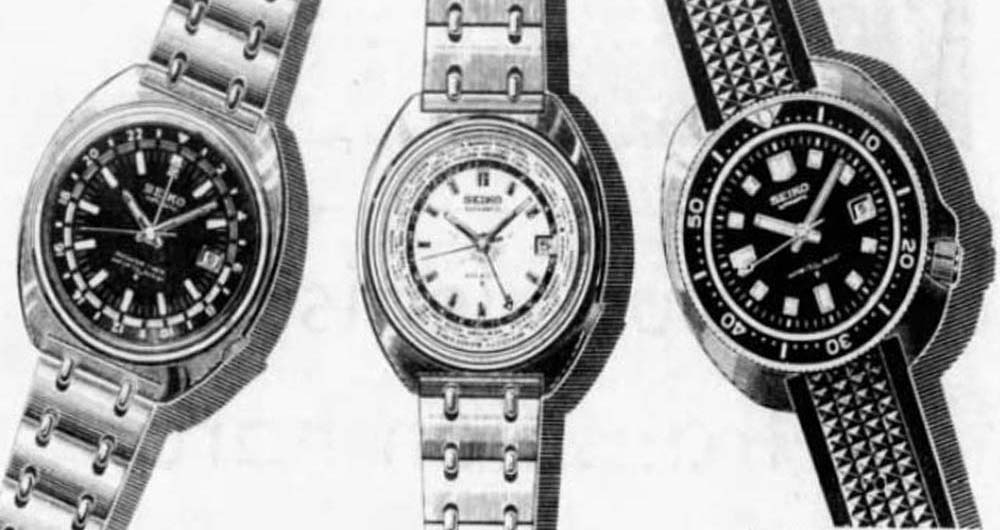
Old Ad Scans: Seiko World Time 6117-640X
A small collection of ad and catalog scans of the SEIKO World Time 6117-640X
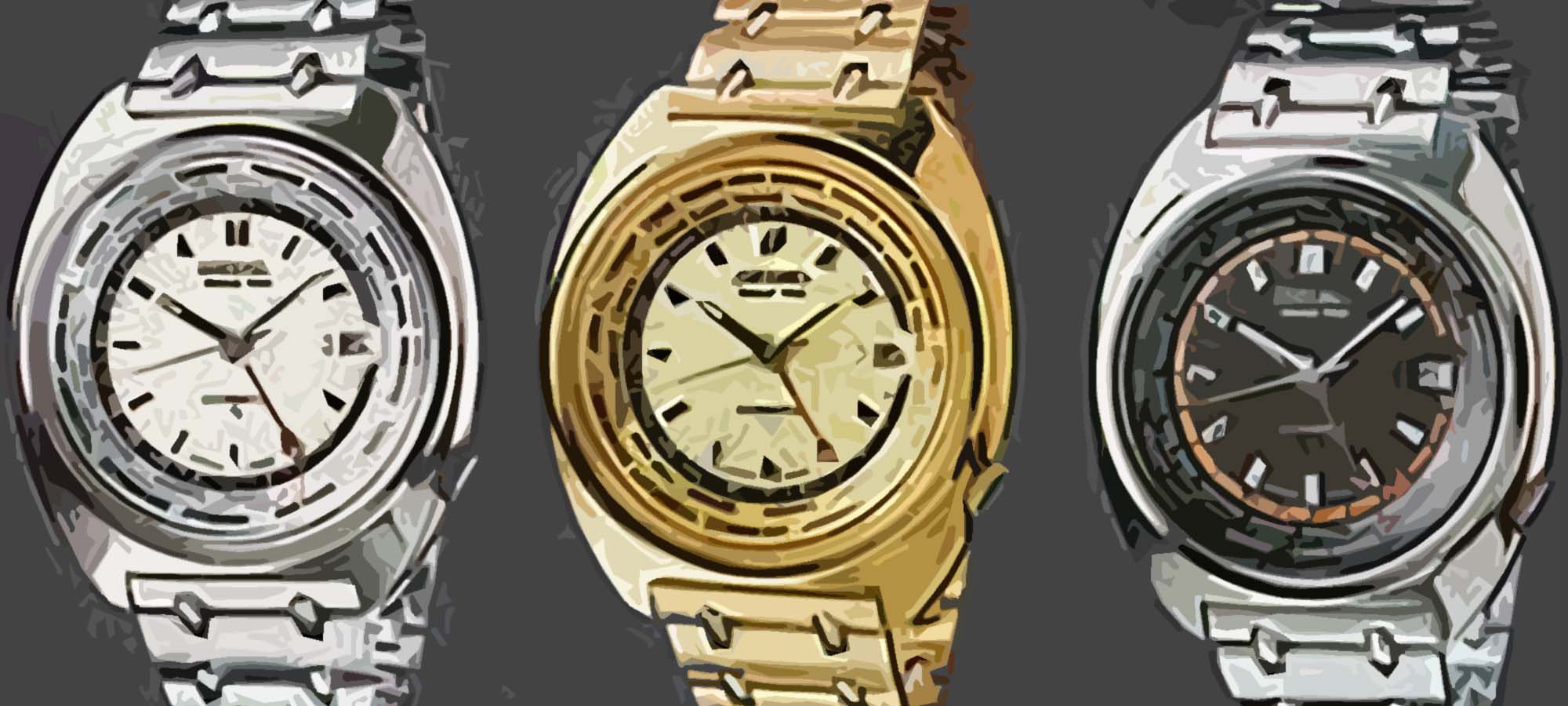
The Seiko World Time 6117-6409 in Gold
All about the gold/gilt world time watch from SEIKO, produced in 1972

The Seiko World Time 6217-7000 - 1967
All about the reproduction of the first series world time watch from SEIKO in 1967

The Seiko World Time 6217-7000 - The Dolphin
All about the Dolphin World Time watch from SEIKO, December 1964

Authenticating The Seiko World Time 6217-7000
Tips on confirming the originality of your Seiko World Time 6217-7000

The Seiko World Time 6217-7000
All about the first series world time watch from SEIKO in 1964
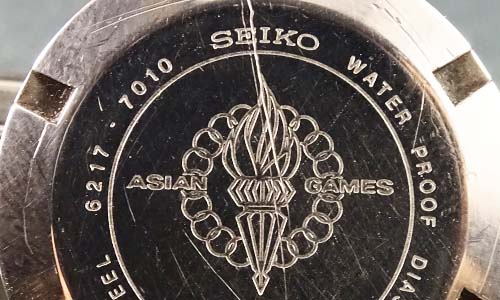
The Seiko World Time 6217-7010 - Asian Games
All about the Asian Games World Time watch from SEIKO, August 1966
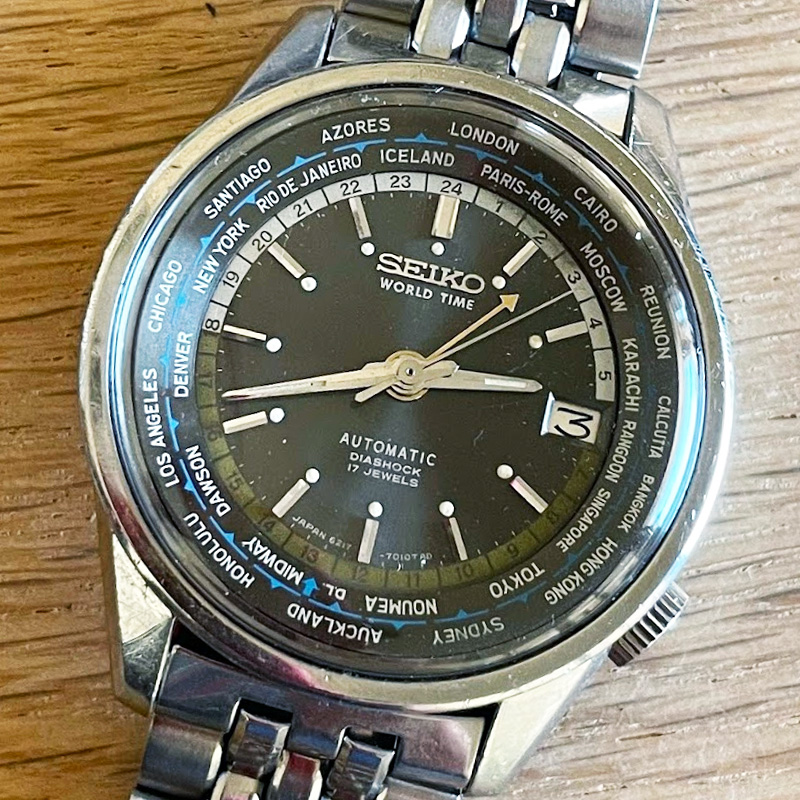
The Seiko World Time 6217-7010 - Standard Edition
All about the 2nd Series World Time watch from SEIKO in 1967

Old Ad Scans: Seiko World Time 6217-7000
A small collection of ad and catalog scans of the SEIKO World Time 6217-7000